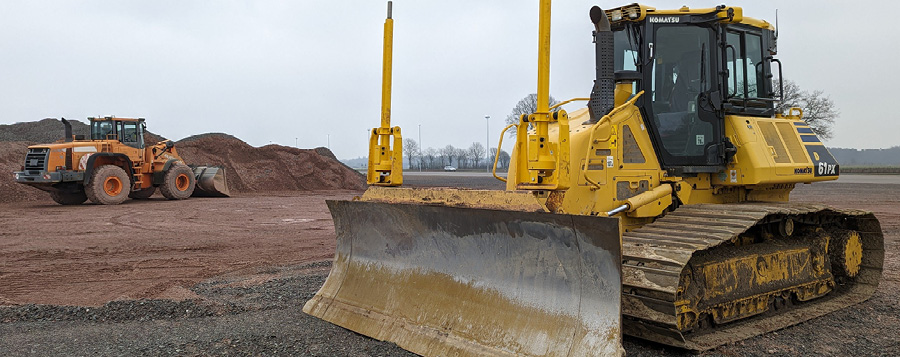Subscribe to our Newsletter
Sign up to receive semi-annual updates on various current and proposed environmental issues including air quality, hazardous waste & water, industrial hygiene, and more.
Home / News / Regulatory Updates / CARB Off-Road Diesel Amendments
CARB Off-Road Diesel Amendments
January 27, 2021

(see Table 1).
| Size | HP | Carryover Expires |
|---|---|---|
| Small | 25-2500 | 1/1/2028 |
| Medium | 2501-5000 | 1/1/2023 |
| Large | Over 5000 | 1/1/2023 |
Carryover Credits Restart
After the initial expiry dates in Table 1, carryover will restart and have no expiration.
Renewable Diesel
Starting January 1, 2024, fleets will need to demonstrate via annual fueling records (contracts/receipts) that the fleet and rental off-road vehicles solely use renewable diesel (RD) (R99 or R100). If RD is unavailable, the fleet must maintain quarterly records of attempts to obtain R99 or R100. Fleets will affirm compliance with the RD requirements during each annual report. Captive attainment fleets or fleets solely comprised of Tier 4-Final (T4F) (or cleaner) engines are exempt from RD requirements.
Tier Phase-Outs
Even if meeting its final FAT, every fleet must “phase out” Tiers 0-2 engines by the January 1st deadlines in Table 2, via conversion to permanent low use (200 hours per year) or engine removal from California operations. Only Tier 0 (T0) engines have a “backstop” that will ban all California operations starting in 2036.
| Fleet Size | 2024 | 2026 | 2028 | 2030 | 2032 | 2036 |
|---|---|---|---|---|---|---|
| Large | T0 | T1 | T2 | T0 Backstop | ||
| Medium | T0 | T1 | T2 | T0 Backstop | ||
| Small | T0 | T1 | T2 | T0 Backstop |
Minimum Tier for Adding Vehicles
Starting January 1, 2024, there will be new minimum tier requirements for adding vehicles to a fleet, as shown in Table 3.
| Minimum Tier for Adding Vehicles (Applicable January 1st of Each Calendar Year) | ||||||
|---|---|---|---|---|---|---|
| Fleet | 2023 | 2024 | 2025 | 2026 | 2027 | 2028 |
| Med/Lrg | Tier 3 | Tier 4- Final (T4-F) | ||||
| Small* | Tier 3 | Tier 4-Interim (T4-I) | T4-F | |||
________________________________
Yorke Engineering has assisted over 2,000 industrial and government facilities across California with EH&S consulting and air quality consulting, as well as permitting and compliance for storm water, wastewater, hazardous waste, industrial hygiene, and safety programs. Learn more here: Services – Yorke Engineering, LLC
If you would like a proposal, click the button below.
Air Quality Tip
As California transitions to zero-emission technologies, companies may want to investigate incentive programs for on-road and off-road vehicle purchases, vehicle replacements, and infrastructure projects. Specific information about funding is available on the local air district websites. Also, plan ahead to source biodiesel.
View our informative archived Newsletters ...
SCAQMD
January 2023
September 2022
February 2022
September 2021
January 2021
August 2020
January 2020
September 2019
January 2019
August 2018
January 2018
August 2017
December 2016
August 2016
February 2016
August 2015
December 2014
September 2014
January 2014
February 2013
July 2012
February 2012
December 2011
August 2011
June 2011
January 2011
BAAQMD
September 2022
February 2022
September 2021
January 2021
August 2020
January 2020
September 2019
January 2019
August 2018
January 2018
August 2017
December 2016
August 2016
February 2016
August 2015
January 2015
August 2014
February 2014
January 2013
July 2012
December 2011
August 2011
SJVAPCD
September 2022
February 2022
September 2021
January 2021
August 2020
January 2020
September 2019
January 2019
August 2018
January 2018
August 2017
January 2017
August 2016
February 2016
August 2015
January 2015
August 2014
January 2014
February 2013
July 2012
February 2012
December 2011
August 2011
